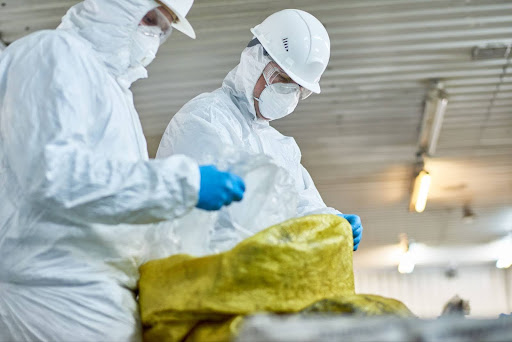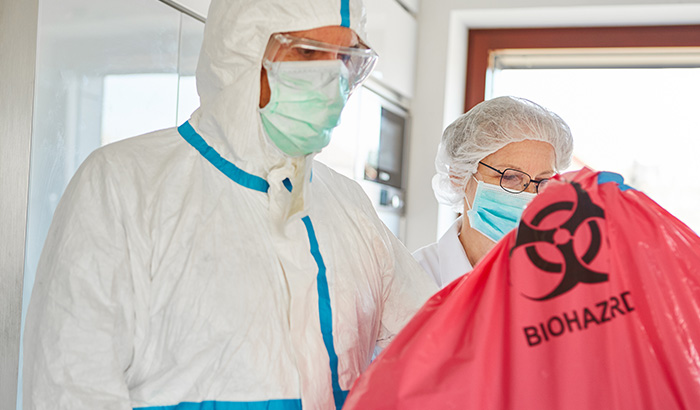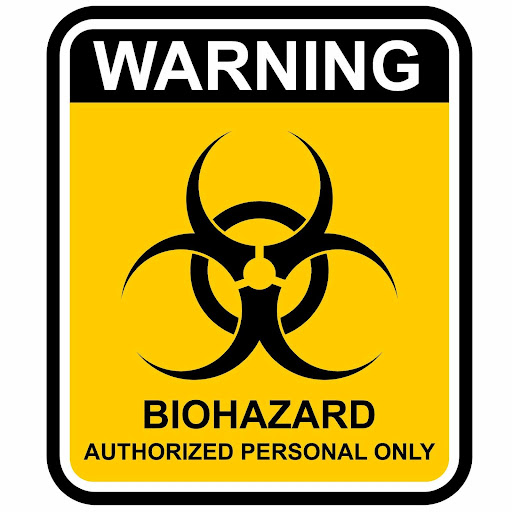Biohazard cleanup is vital to maintaining a clean and safe environment, but it’s often poorly understood. It involves carefully handling and disposing of materials contaminated with biological substances that pose health risks.
We aim to demystify the various types of biohazard cleanup, making it accessible to everyone, not only the experts. By grasping the distinctions between these cleanup categories, you’ll be better prepared to identify potential biohazard situations and the significance of proper cleanup practices.
Infectious waste cleanup
Understanding infectious waste cleanup is recognizing it directly impacts public health and safety. Infectious waste cleanup deals with contaminated materials containing pathogens, including bacteria, viruses, and fungi, capable of causing diseases in humans.
This category of biohazard cleanup includes a wide array of items and substances that may harbor harmful microorganisms. Think of used medical supplies like needles, syringes, bandages, and bodily fluids such as blood and urine.
Handling infectious waste comes with inherent risks, given the potential for disease transmission. Those involved in infectious waste cleanup must take stringent precautions to protect their health. This involves wearing personal protective equipment (PPE), such as gloves, masks, and gowns, to minimize contact with contaminated materials.
Ensuring proper hand hygiene and disinfection practices also aids in preventing the spread of pathogens.
The proper disposal of infectious waste involves using specialized containers labeled as biohazardous waste. These containers prevent leaks and guarantee safe transport to designated treatment facilities. Adhering to established protocols for infectious waste disposal is essential for minimizing the risk of infections and protecting both workers and the broader community.

Blood cleanup
Blood cleanup deals with environments contaminated by blood or other bodily fluids. The risks associated with blood cleanup primarily stem from potential exposure to bloodborne pathogens. Even dried blood can contain active pathogens, posing a risk if not managed properly. Therefore, comprehensive safety measures are crucial when dealing with blood cleanup.
But, what are bloodborne pathogens?
Bloodborne pathogens are tiny microorganisms found in blood that cause diseases when transmitted to humans. Some of the most well-known bloodborne pathogens include HIV, Hepatitis B, and Hepatitis C. These infections can have severe health consequences for individuals and the general public, underscoring the importance of handling blood cleanup with the utmost care.
In addition to proper PPE, as we’ve already discussed, effective blood cleanup also necessitates specialized equipment, including biohazard bags, absorbent materials, and disinfectants. Using EPA-approved disinfectants is essential to thoroughly eliminate bloodborne pathogens, reducing the transmission risk.
Crime scene cleanup
You may think you’re familiar with crime scene cleanup from popular TV shows, but there are some important distinctions off-screen in real-life situations.
Crime scene cleanup encompasses a broad spectrum of scenarios, ranging from homicides and suicides to accidents and unattended deaths. In these distressing situations, bodily fluids, blood, and tissues may pose significant health risks due to potential exposure to bloodborne pathogens.
Proper crime scene cleanup is not only essential for safety but also for the welfare of those involved and the restoration of the affected area.
There are crucial legal considerations that must be accounted for when tackling crime scene cleanup. Regulations and guidelines often vary by local, state, and federal laws governing the handling and disposal of biohazardous materials. Non-compliance with these regulations has severe legal ramifications.
Professionals in crime scene cleanup undergo specialized training and certification to ensure they possess the requisite knowledge and skills to manage biohazardous situations effectively and safely. This includes an understanding of the psychological aspects of the job, as crime scene cleanup often involves interactions with grieving families and individuals who have endured traumatic experiences.
Hoarding cleanup
A challenging but essential aspect of biohazard mitigation is hoarding cleanup. Hoarding is a complex mental health condition characterized by an overwhelming urge to accumulate possessions, even those with little or no value. As a result, the homes of individuals with hoarding disorder often become cluttered, creating serious health and safety risks.
Hoarding cleanup involves the daunting task of addressing the living conditions of those affected by hoarding disorder. Approach this with empathy and understanding, recognizing that hoarding is a manifestation of deeper mental health issues.
The hazards associated with hoarding cleanup are multifaceted. The clutter poses tripping hazards, blocks escape routes, and results in unsanitary living conditions. Additionally, mold, pests, and biohazards may be present, making the cleanup process complex and potentially dangerous.
A successful hoarding cleanup requires a compassionate and comprehensive approach. It’s essential to involve mental health professionals or social workers who will collaborate with cleanup experts to address the root causes of hoarding and support the affected individual. This dual approach ensures the physical cleanup of the premises as well as the well-being and mental health of the person residing in the hoarded environment.
By understanding the intricacies of hoarding disorder, acknowledging the associated risks, and prioritizing a compassionate response, we can grasp the significance of this specialized field and its capacity to improve the lives of individuals and the safety of their living spaces.
Unattended death cleanup
The causes of unattended deaths are diverse and range from natural deaths due to aging or health conditions to tragic accidents or unforeseen events. Regardless of the cause, unattended death scenes present unique challenges for cleanup.
Health risks are a significant concern in unattended death cleanup. Decomposition of the body releases hazardous pathogens and odors, posing potential health threats to anyone in the vicinity. The odor, in particular, can be overwhelming and distressing.
Addressing these challenges requires professional assistance. Biohazard follows strict protocols for biohazard removal, disinfection, and deodorization. Their expertise ensures the thorough cleanup and restoration of the affected area while mitigating health risks.
Unattended death cleanup is not only a matter of physical cleanup but also one of compassion and sensitivity. It’s essential to approach these situations with empathy, understanding the emotional toll they take on loved ones. Cleanup professionals not only restore the physical space but also provide support and reassurance during a difficult time.
This delicate, specialized field within biohazard mitigation demands professionalism, compassion, and expertise in helping families and communities navigate challenging circumstances with care and respect.
Biohazard cleanup process
The biohazard cleanup process is a well-structured approach. Whether it’s infectious waste, blood, crime scenes, hoarding, or unattended deaths, the cleanup process is a well-structured approach that adheres to specific steps designed to ensure safety, efficiency, and compliance with regulations.
Steps involved in biohazard cleanup
Assessment and Planning
The process begins with a comprehensive assessment of the biohazard scene. Cleanup experts carefully evaluate the extent of contamination and plan the cleanup process accordingly. This step involves identifying potential risks and determining the scope of the work.
Personal Protective Equipment (PPE)
Cleanup professionals equip themselves with personal protective gear to shield against biohazard exposure. This typically includes gloves, masks, gowns, and eye protection.
Containment
Preventing the spread of biohazards to unaffected areas is a primary concern when dealing with biohazard cleanup. To achieve this, the contaminated space may use physical barriers or plastic sheeting to keep it in one place.
Cleanup and Decontamination
Cleaning and decontamination are meticulous processes. Specialized cleaning agents and disinfectants are employed to guarantee thorough decontamination.
Disposal
The careful collection and proper disposal of biohazardous waste is a critical step. All disposal activities adhere to local, state, and federal regulations, including the use of approved containers and transport methods.
Restoration
Depending on the situation, structural or property restoration may be required. This may involve repairing or replacing affected materials to restore the area to its pre-incident condition.
Seeking the services of professional biohazard cleanup teams is of utmost importance for your safety and the safety of everyone involved. Selecting a reputable biohazard cleanup company guarantees compliance with all applicable regulations, minimizing legal and liability risks.
Total Flood & Fire is there when you need biohazard cleanup
In times of biohazard-related challenges, Total Flood & Fire Restoration stands as your trusted partner. With our dedicated team of professionals, commitment to safety, and adherence to strict regulations, we are well-equipped to handle any biohazard cleanup scenarios.
Don’t hesitate to call 385-483-2109 or use our online form to get the biohazard cleanup you need. Your peace of mind is our priority.









